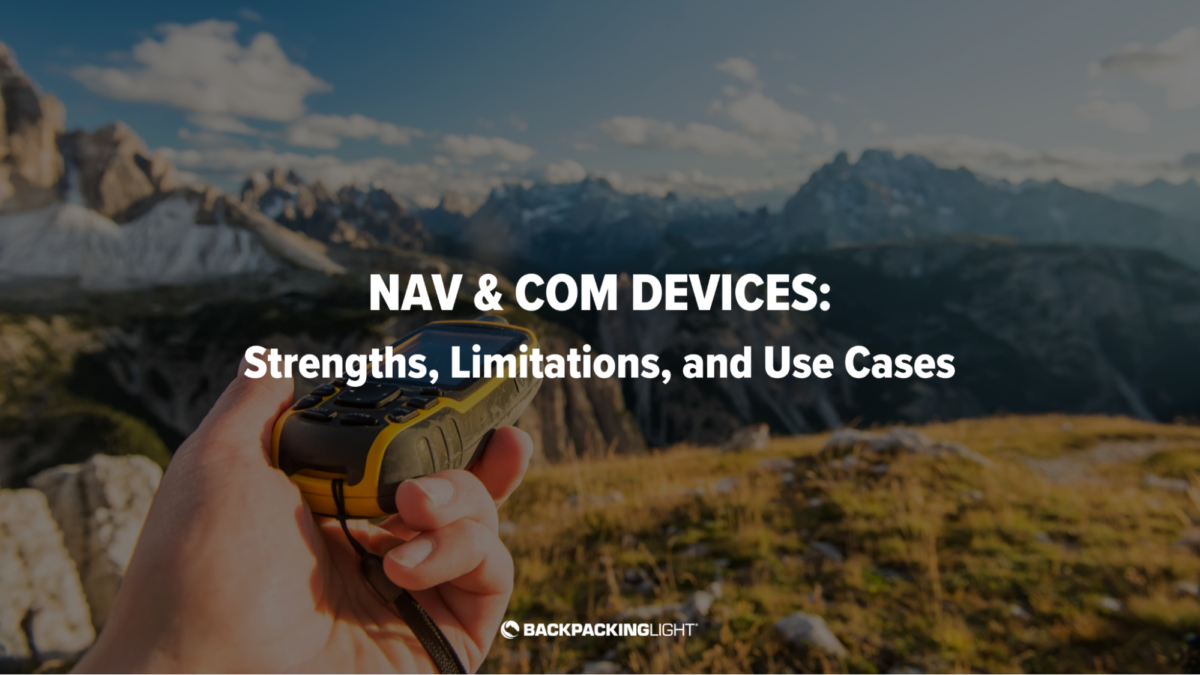In this video, I will cover various types of navigation and communications devices, their benefits and limitations, and use case scenarios where you might use one or a combination of multiple devices.
About this Video Series
This video is a recording of a previous Member Q&A Live Stream. If you are logged in with a Premium or Unlimited Membership, you’ll see a recording of the entire live stream event. Otherwise, the video player below will show only the keynote presentation from the event.
Live Member Q&A’s can be accessed by all Basic, Premium, and Unlimited Members. Join us live next time – view the live event schedule on our Events Calendar

Leveraging technology for navigation and communication can enhance safety and enjoyment during backcountry recreation. The various devices and strategies that backpackers can utilize to enhance their safety and enjoyment, and certain use cases highlight practical applications for different pieces of equipment..
Navigation and Communication Devices:
- Maps and Compasses: Essential for traditional navigation, offering reliability without reliance on batteries or electronic signals. They require skill but connect you deeply with the environment.
- Standalone GPS Units: Offer precise location tracking and are invaluable in areas with complex geography or limited visibility. They work well in cold conditions, unaffected by smartphone limitations like battery drain or screen responsiveness.
- GPS Watches: Provide quick access to GPS data, including altitude and direction, right on your wrist. Ideal for tracking routes and monitoring physiological data during activities.
- Smartphones: Versatile devices that can replace multiple pieces of gear with the right apps for navigation, communication, and entertainment. However, their effectiveness diminishes in extreme weather, and they require careful battery management.
- Personal Locator Beacons (PLBs): Dedicated emergency devices that signal for help with one push of a button. They offer peace of mind in remote areas where other communication methods might fail.
- Satellite Messengers: Allow for two-way text communication even without cell service, making them perfect for staying in touch or getting help in non-emergency situations. They often integrate with smartphones for enhanced functionality.
- Two-Way Radios: Facilitate real-time, short-range communication between group members, crucial for coordinating activities or in case of separation.
Use Cases:
- Map and Compass: Bets for their simplicity and reliability. They foster a strong connection with the surrounding landscape and are a favorite for their no-fail nature.
- GPS Watch: Worn not just for navigation, but also to monitor physical exertion and health metrics. It’s a tool that enhances understanding of personal performance and the body’s response to different environments.
- Smartphone: While not primarily used for navigation to conserve battery, it serves as a multi-functional tool for capturing moments, reading, and emergency GPS checks, especially beneficial in fair weather conditions.
- Standalone GPS: Becomes essential in winter or when navigating complex terrains. Its reliability in adverse conditions makes it a go-to over a smartphone.
- Satellite Messenger: Carried for all trips as the main SOS and communication device. It provides a safety net for emergencies and a link to the outside world for checking in or non-urgent communications.
Choosing the right mix of technology for hiking, backpacking, and other backcountry trips depends on the activity, environment, and individual preferences. From the reliability of traditional maps and compasses to the advanced capabilities of satellite messengers, each device offers unique benefits. Combining these tools thoughtfully can create a safety and navigation system that allows the user to meet their own use case objectives related to outdoor enjoyment, preservation of the wilderness experience, navigation needs, and risk management.
Related Content
- Online Course: How to Use the Garmin inReach
- Gear Guide: Satellite Messaging Devices (“Messengers”)
<blockquote>
This video was originally presented in a Member Q&A live-stream event. Live Member Q&A’s can be accessed by all Basic, Premium, and Unlimited Members. Join us live next time – view the live event schedule on our Events Calendar.
</blockquote>




Home › Forums › Navigation and Communication Devices: Strengths, Limitations, and Use Cases